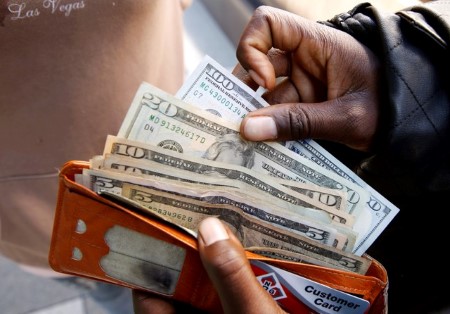




Philippines Trade Update: Trade trajectories trend along
 DOWNLOAD
DOWNLOAD

Policy Rate Updates: Double cut finale
 DOWNLOAD
DOWNLOAD

Monthly Economic Update: One for the road
 DOWNLOAD
DOWNLOAD


US yields firmer as strong data trims rate cut expectations

NEW YORK, April 1 – US Treasury yields rose on Monday as stronger-than-expected manufacturing data raised doubts on whether the Federal Reserve could actually deliver on the three interest rate cuts outlined in its forecast at the last policy meeting.
Volume was light, with London closed for Easter Monday. Bond investors expect trading to pick up starting Tuesday ahead of a slew of economic data this week, such as reports on the US services sector, the Job Openings and Labor Turnover Survey (JOLTS), and US nonfarm payrolls on Friday.
US two-year and 10-year yields climbed to two-week peaks in the wake of the robust manufacturing data.
Data on Monday showed US manufacturing grew for the first time in 1-1/2 years in March, as production rebounded sharply and new orders increased. However, employment at factories remained subdued and prices for inputs pushed higher.
The Institute for Supply Management’s (ISM) manufacturing PMI increased to 50.3 last month, from 47.8 in February. March’s number was the highest and the first reading above 50 since September 2022. A reading above 50 indicates growth, while one below that level indicates contraction.
Data also showed inflation at the factory gate picked up. The survey’s measure of prices paid by manufacturers rose to 55.8 from 52.5 in February.
“The idea that the economy might be reversing itself somewhat, picking up momentum, as opposed to losing it, is gaining more traction,” said Jim Barnes, director of fixed income at Bryn Mawr Trust in Berwyn, Pennsylvania.
“And that’s where you start having a little bit of a correction in current interest rates where it’s now a coin toss as to what happens at the June meeting. If the first rate cut gets pushed off to the third quarter, then I think the market anticipates two rate cuts overall for the year,” he added.
The US rate futures market has priced in a 58% chance of a rate cut in June, down from about 64% a week ago, according to the CME’s FedWatch tool.
The market has also pared back the number of rate cuts to about two this year, from three a few weeks ago, according to LSEG’s rate probability app.
Key Fed officials — Governor Christopher Waller and Atlanta President Raphael Bostic — have expressed their preference for fewer than three cuts this year. The market will get more clarity on the US central bank’s thinking this week, with 13 of 19 Fed officials speaking.
“More and more people are starting to question the Fed’s rate outlook of three cuts because US data has been strong,” said Stan Shipley, fixed income strategist, at Evercore ISI in New York.
“Growth has been in the twos, inflation has been in the threes. That’s not what the Fed wants. I would say unless we see some weak data pretty soon here, people will start to question the June cut too,” he added.
In afternoon trading, the benchmark US 10-year yield rose as high as 4.337%, its strongest level since March 18. It was last up 13.3 basis points (bps) at 4.327%.
US 30-year bond yields advanced 12.9 bps to 4.465%.
On the shorter end of the curve, US two-year yields, which track rate move expectations, were up 9.4 bps at 4.713%. Earlier in the session, two-year yields hit 4.726%, a roughly two-week high.
The US yield curve, meanwhile, steepened on Monday, or narrowed its inversion, with the closely watched spread between 10-year and two-year US Treasury yields at minus 38.6 bps, up from minus 42.4 bps late on Thursday.
A typical predictor of recessions, the US yield curve has been inverted since July 2022.
(Reporting by Gertrude Chavez-Dreyfuss; Editing by Alexandra Hudson)
This article originally appeared on reuters.com





 By Reuters
By Reuters